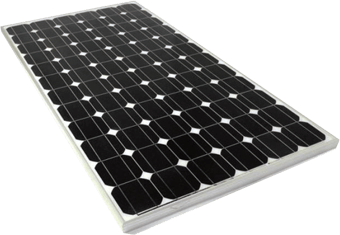
The basic principle of solar charging is the same as any battery charger (see the Charging page), except instead of plugging in, you rely on the sun. This means free energy—and the more solar panels you have, the better.
Contrary to popular belief, you can’t have “too much” solar—if your batteries are full and you’re not using the excess power, it’s simply wasted as heat. So if you’re thinking about adding more panels, go for it!
The amount of power your solar setup can generate depends on a few key factors:
1️⃣ Solar Panel Wattage – The more watts, the more power generated.
2️⃣ Solar Regulator Size – Regulates how much power goes into your batteries (typically 15A–60A).
3️⃣ Cabling Quality & Size – Undersized cables can cause voltage drop, reducing efficiency.
Sounds great, right? Well, there are a few things that can reduce your solar efficiency.
🔹 Panel Angle & Placement – Laying panels flat (like on a caravan roof) reduces efficiency to about 70%. So, a 300W panel will effectively generate 210W in real-world conditions.
🔹 Cloudy Weather – Clouds significantly reduce power generation, meaning your charging speed depends on the day’s conditions.
🔹 Regulator Limitations – Your solar regulator determines how much power can flow into your batteries. A 15A regulator will bottleneck a large solar setup, while a 30A or 60A regulator allows for better charging.
🔹 Sunlight Hours vs. Daylight Hours – Just because it’s daytime doesn’t mean you’re getting strong solar power. In Mackay, QLD, the average usable sunlight hours is around 5.8 hours per day.
Let’s break that down:
For reference, our Waeco fridge alone draws 3.5A per hour, so hitting 104Ah in daily usage is very easy.
Here’s what we’re running:
✅ 600W of solar on the caravan roof
✅ Redarc Manager 30 with a built-in 30A solar regulator (double the size of Jayco’s standard 15A)
✅ 3 x 120Ah lithium batteries = 360Ah total (180Ah usable at 50% depth of discharge)
✅ 1 x 120Ah battery in the ute (for power-hungry appliances)
By 7AM, our Redarc Manager shows our batteries at 87%—meaning we’ve used about 13% (24Ah) overnight.
What’s using power overnight?
The fridge is the biggest consumer, averaging 3.5–4A when running. The 12V TV draws 2A, while LED lights are about 1A each.
Since the fridge runs less at night when it’s cooler, overall power usage is low between 10PM and 7AM.
By 7AM, our solar setup starts generating small amounts of power. By lunchtime (1PM), we’re usually back to 100% charge.
Between 1PM and 5PM, any power we use comes directly from the solar panels, meaning it doesn’t impact our battery levels.
So, as long as it’s sunny, we never worry about power.
You might be thinking:
“If you’re only using 13% overnight, why bother with 3 batteries?”
Here’s why:
🔹 Cloudy Days – Reduced solar input means more stored power helps.
🔹 Shade – Parking under trees? Your panels won’t charge as well.
🔹 Dust & Dirt – Dirty panels reduce efficiency.
🔹 Extra Capacity – More batteries mean less stress about power usage.
We also have a 4th 120Ah battery in the ute, charged by a DC-DC converter and a dedicated solar panel. This battery powers:
Our setup works perfectly for our needs. We don’t stress about leaving lights on, and we can relax knowing we have enough power to run everything comfortably.
If you’re setting up your own caravan solar system, think long-term:
☀️ More solar = better
🔋 Extra battery capacity = peace of mind
⚡ A good solar regulator = efficient charging
And always remember: coffee comes first. ☕😜